The DNA Network |
| Finding a New Gene Behind Language Disorders [adaptivecomplexity's blog] Posted: 02 Dec 2008 11:54 AM CST Why can humans talk while chimps can't? The answer is more than just vocal cord anatomy; our brains have a lot to do with our ability to learn and use language. One 'language gene' is FOXP2. Mutations in FOXP2 lead to a rare but dramatic language disorder. Characterized by an inability to use grammar. We all know people who are grammatically challenged (stemming from illiteracy, for example), but this disorder is not the same thing - the affected people have a strong genetic barrier that prevents them using grammar, no matter how hard they work at it. This disorder is a dramatic example of a language development disorder, but millions of children have much more mild language disorders. Many of these kids outgrow their language problems but not all. A group of researchers working in the UK and the US asked whether some of these relatively mild language disorders are somehow connected to the FOXP2 gene, which so far has only been found to be involved in dramatic speech disorders. Sure enough, they found that variants in a gene regulated by FOXP2 are strongly correlated with mild language disorders. | |
| ABRF 2009 is just around the corner [FinchTalk] Posted: 02 Dec 2008 09:11 AM CST | |
| Interview with Robert Green about Presidential DNA [The Personal Genome] Posted: 02 Dec 2008 06:37 AM CST
Last week I featured a recent NEJM article by Robert Green and George Annas about presidential DNA and its role in public elections. Co-author Robert Green (pictured right) agreed to share more about his views on the issue, in the following Q&A: TPG: Both presidential candidates released information about their personal medical history during the recent election. Why do you believe genetic information should be treated differently? Why is DNA exceptional? RG: There is a great deal of debate about whether DNA information warrants the ‘exceptionalism’ that has attached to it. The risk information provided by most genetic tests is currently less specific than family history and other risk factors can provide, putting it squarely into the domains of disease risk that health workers regularly communicate to patients. When discussing common diseases, the “exceptionalism” of genetic testing is amplified by the incorrect public perception that most genetic markers provide highly predictive information, when in fact, this is true for only a few. TPG: Both Obama and McCain have potentially serious conditions in their family medical histories (prostate cancer and heart disease, respectively). Do you believe genetic information could have helped voters in the last election evaluate the health status of the candidates? RG: Most of us would agree that health information is relevant to a candidate’s fitness for office, particularly an office like the Presidency. Therefore, health information that could affect fitness for office seems undeniably relevant to voter decisions. So while the public does not have a right to know every detail of a candidate’s medical history, those facts relevant to fitness should be public information. Health information related to fitness may be misunderstood, exaggerated or minimized and therein lies the problem. The public is not particularly skilled or rational at sorting out the probabilities associated with health risks from whatever source… be it prior illness, lifestyle habits like smoking, cholesterol levels, family history information or genetic testing results. In the last election, I do not believe that any genetic information currently available woudl have been sufficiently predictive to warrant sharing with voters. However, if a highly predictive genetic test for recurrence of melanoma were available, that would arguably have been relevant and thus, would warrant dislosure to voters. TPG: In your article you argued that the fierce political environment that surrounds elections, combined with our limited ability to understand genetic information, might lead to “genetic McCarthyism”. Is this a temporary circumstance? RG: As we pointed out, there is a clear potential that someone might try to use genetic markers to smear another candidate, particularly in the realm of behavioral of psychiatric genetics. Certain conditions, such as mental illnesses, are so psychologically loaded that such smears might even be effective, even if quickly countered by experts explaining the predictive limitations of the science. But as your question suggests, as the general population becomes more familiar with genetic information and the limitations and complexities of such information, there should be less of a potential for distortion. Whether you call it “Genetic McCarthyism” or “Genetic Swiftboating”, and whether it occurs in presidential politics or in other contentious situations (lesser elections, custody cases), all of us in genetics should be prepared for it and prepared to combat it when it occurs. – Dr. Robert Green is a professor in the Departments of Neurology, Medicine (Genetics), and Epidemiology at the Boston University Schools of Medicine and Public Health. | |
| Networking with LinkedIn and LabRoots [Bitesize Bio] Posted: 02 Dec 2008 04:56 AM CST You may have seen some of the different websites around for networking. I'm not talking about Facebook or Myspace, which are for social networking. Facebook and Myspace are great for keeping up with friends and sharing more personal details about your non-work life. For scientific networking, you want to be able to connect with people on a professional level. Networking is critical because biotech and bioscience in general are very small worlds. The people you are meeting and working with today may very well be the ones that help you get a job 10 years from now. The sales rep that you pissed off yesterday because he interrupted you at your bench might be the vice president of a company you would die to work for years later. Believe me – it does happen. So start building your network of associates and colleagues now and you will reap the benefits when you need it the most. Ok, so which site to use? We've given an overview of social networking sites for scientists here before. But I'd like to focus on the two networking sites I currently use for keeping in touch with my contacts and helping me to build my network. The first one is LinkedIn and the other is a brand new site called Labroots. On LinkedIn, your profile is professional and is basically your CV or resume. You can embellish on your profile to highlight your achievements and advertise your marketability, if you are looking for a job. There are a very large number of recruiters using LinkedIn so you can almost guarantee that you will be contacted by potential employers if you are looking for work. A nice feature specific to LinkedIn is that you can leave a recommendation on a colleagues profile and they can recommend you. This is especially great to have unsolicited reviews about you if you are looking for employment and also it's just nice to receive positive feedback. Another unique feature of LinkedIn is that once you have entered your information on your graduate schools and former companies, it alerts you when people from your previous schools or companies are registered. It proactively helps you to re-connect with old friends and colleagues. And LinkedIn also gives you updates on your network's network so you can check out new people and see if you have common interests. What I love about this site is that there are a huge number of professional using it. Their website says that over 30 million professionals are members of LinkedIn. That may be an underestimate. Virtually everyone in the biotech industry can be found on LinkedIn and I am noticing more and more that academic researchers are using it too. But it is not strictly for biotech and scientists, in fact it is not career specific at all so every industry is represented on LinkedIn. I highly recommend this site to everyone because of it's depth of members and the ability to easily build a network for your current or future career. Labroots is a brand new networking site specifically for the scientist. It was started by Greg Cruikshank in March of 2008. At first I was skeptical about whether or not I really needed another site besides linkedin.com for networking. But after playing on the site and with my profile for the last few weeks, I have to say it is a really cool. The profile information is also similar to a CV or resume except unlike linkedin.com, it is basically the dates and places where you studied or worked and doesn't have the option to go into major detail about your skills or experience. It seems to be more focused toward the academic researcher because they providing space to list posters, papers, grants, presentations, and honors and awards. The difference between LinkedIn and Labroots is that the profile information is just the facts without the fluff. The features I like best about the site are the news articles, events, and publications and the ability to personalize your homepage with widgets such as an RSS feed, the weather, the encyclopedia, a dictionary, a calculator, a clock, and a language translator. It makes the page more your own and something you might want to keep open all day long. You get the latest scientific news headlines and publications along with the fun stuff you selected for your front page. This makes the site more unique and more customized so its more than just a networking site but it is also a great resource for information. Because this site is new, membership is still ramping up so although there are many interesting discussion groups to join (I started two myself), there is not much discussion at the moment. I hope this changes as people find out about labroots.com and register. I think as scientists we sometimes become very introverted because of the depth of focus required in our projects and the intense singularity of lab life. Networking sites provide a way for scientists to connect and meet people that you would normally never interact with and all from the safety of a computer. No actual human physical interaction is necessary. Now all we need is for these networking sites to send us free t-shirts and we'll be all set! | |
| oh great Ceiling Cat... [the skeptical alchemist] Posted: 01 Dec 2008 11:56 PM CST | |
| What’s on the web? (1 December 2008): Top 10 Medical Innovations for 2009 [ScienceRoll] Posted: 01 Dec 2008 01:37 PM CST
 | |
| Monday Video: Amateur Transplants [ScienceRoll] Posted: 01 Dec 2008 01:25 PM CST | |
| Top 10 Amazing Biomedical Videos [ScienceRoll] Posted: 01 Dec 2008 01:24 PM CST Wired Blog published a list of 10 amazing biomedical videos featuring some really great animations, but they missed a few others: And many more at MolecularMovies.org:  | |
| World AIDS Day 2008: Bloggers Unite! [ScienceRoll] Posted: 01 Dec 2008 01:00 AM CST December 1 is the World AIDS Day so it’s time to dedicate a post to this important disease. From Wikipedia:
Check AIDS.gov for more reliable information. And please visit the Bloggers Unite site:
 | |
| Cyberchondria and Health 2.0 News [ScienceRoll] Posted: 29 Nov 2008 02:51 PM CST I should study psychiatry for my next exam, but I must share a few articles with you first:
 | |
| MyGeneticist: I want to know about my DNA [ScienceRoll] Posted: 29 Nov 2008 02:30 PM CST Steve Murphy, our gene sherpa, informed us about a new site, MyGeneticist.com which
We need such services… I can’t wait to see how it actually works.  | |
| Genome Island in Second Life [ScienceRoll] Posted: 29 Nov 2008 02:12 PM CST Do you remember my post mentioning Genome Island, a unique educational place in Second Life? I also made an interview with Max Chatnoir, the creator. Now you can explore the island through a video: Further reading:
 |
| You are subscribed to email updates from The DNA Network To stop receiving these emails, you may unsubscribe now. | Email Delivery powered by FeedBurner |
| Inbox too full? | |
| If you prefer to unsubscribe via postal mail, write to: The DNA Network, c/o FeedBurner, 20 W Kinzie, 9th Floor, Chicago IL USA 60610 | |



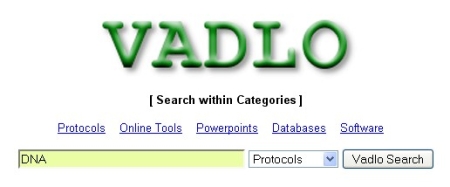




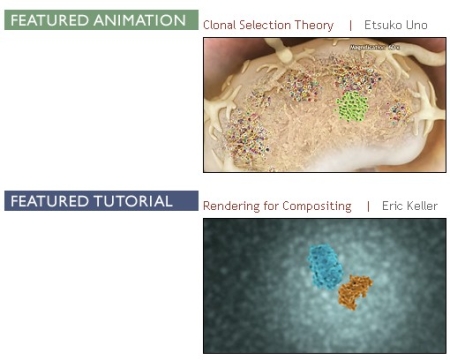
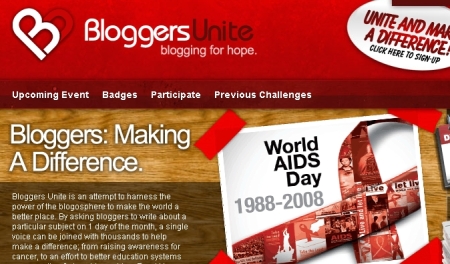
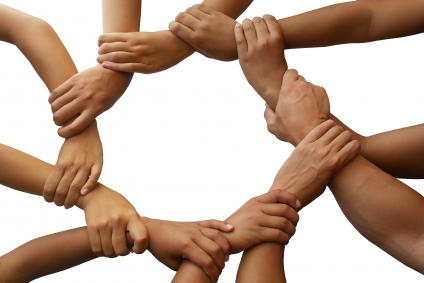
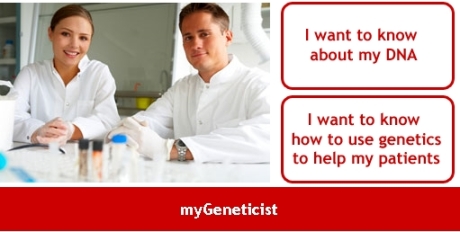

No comments:
Post a Comment